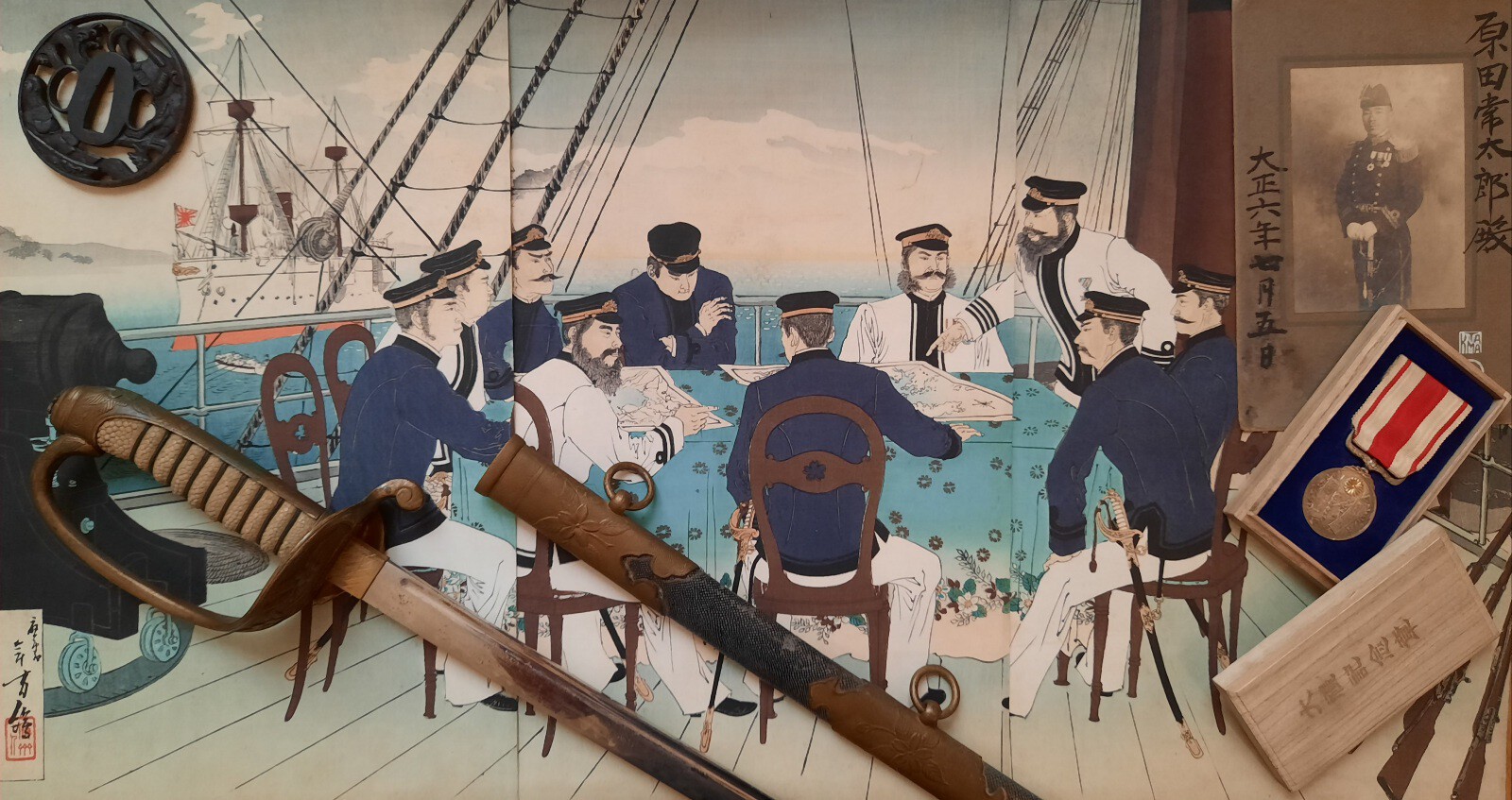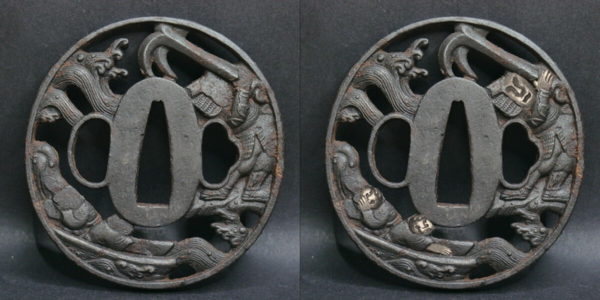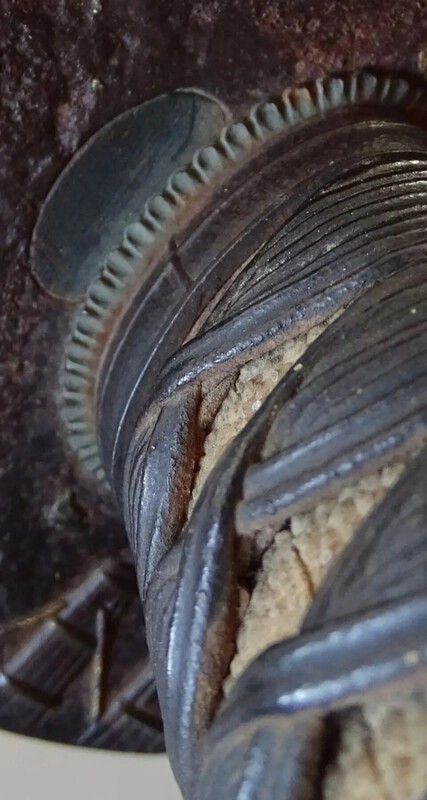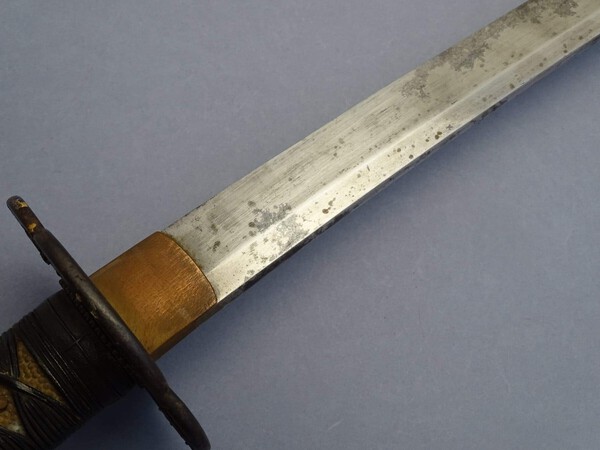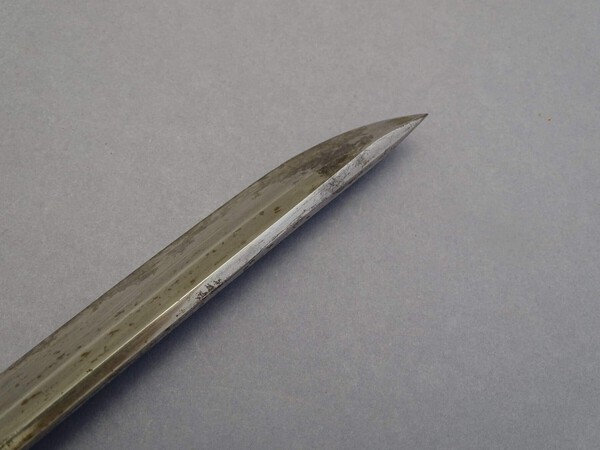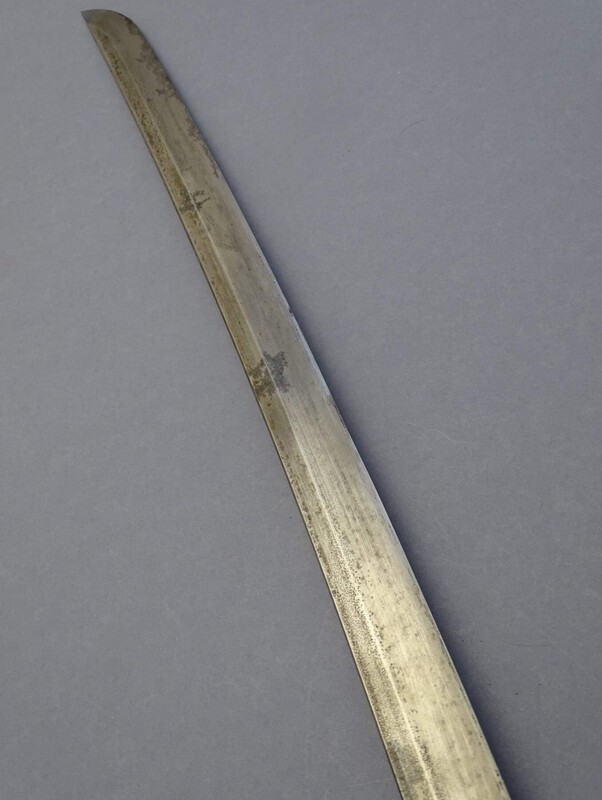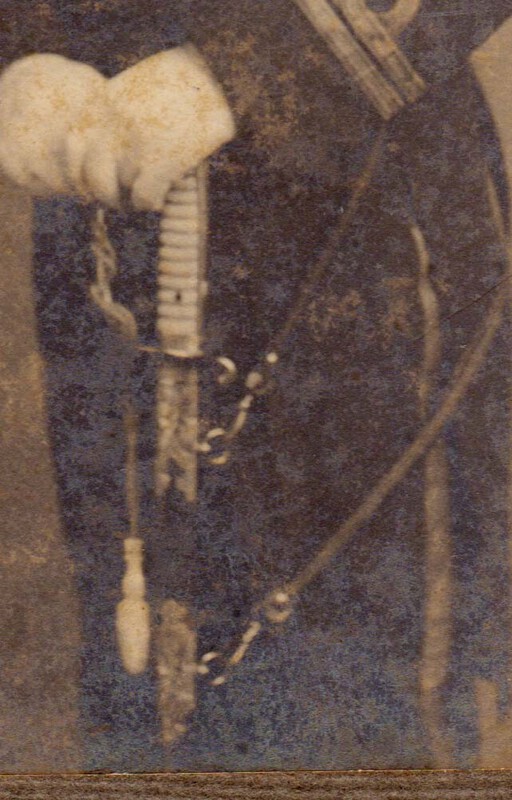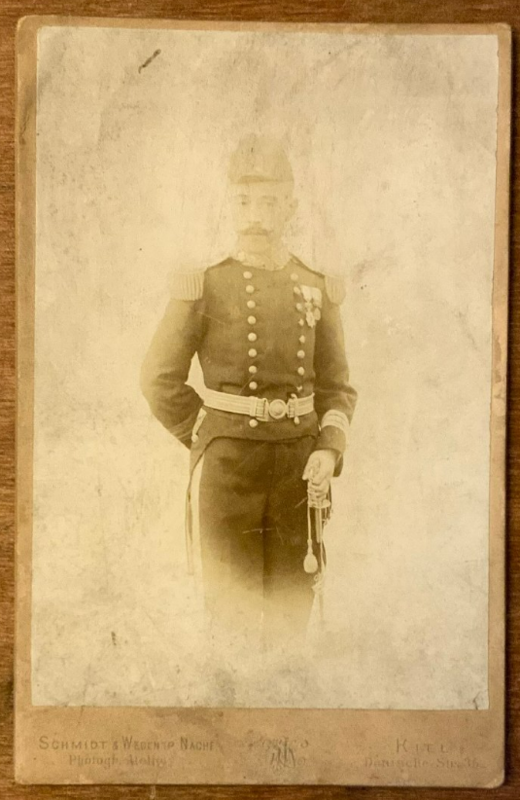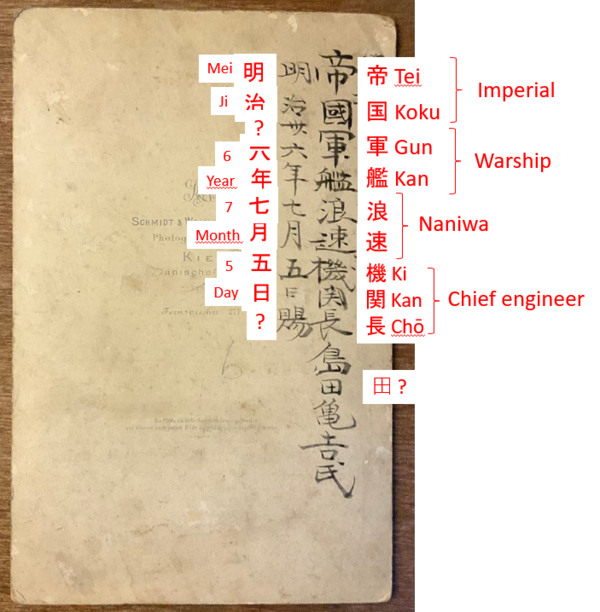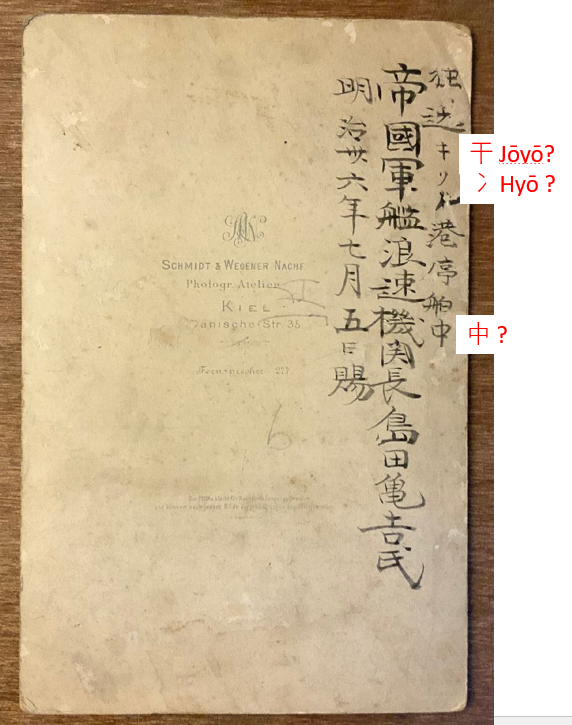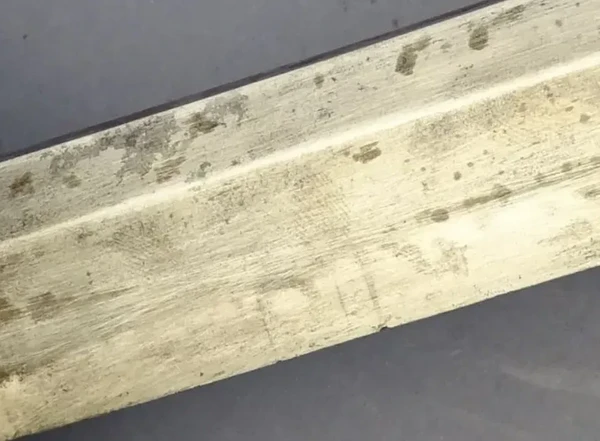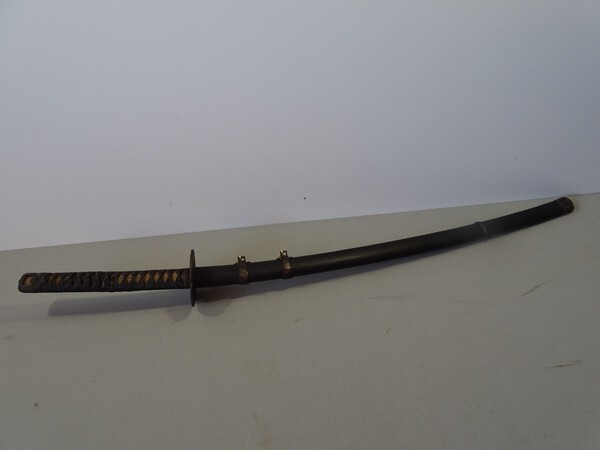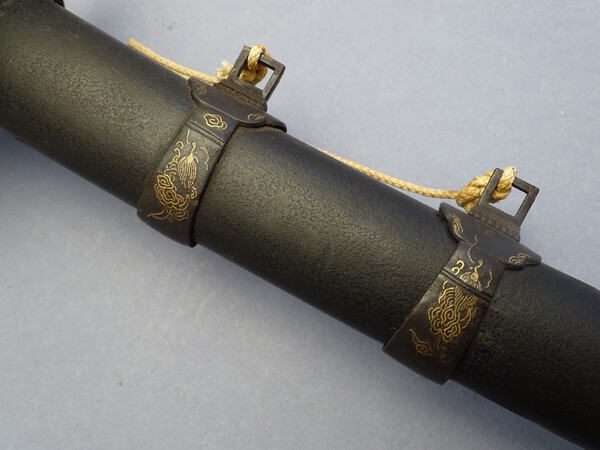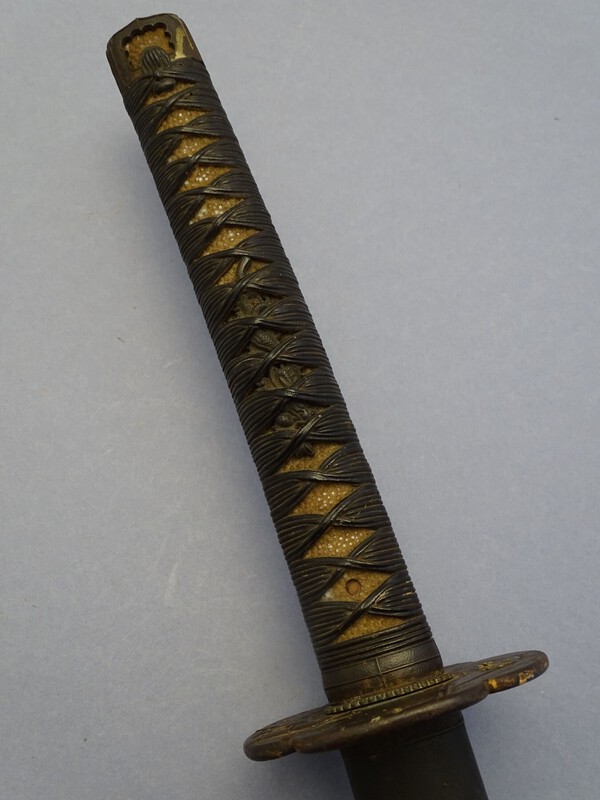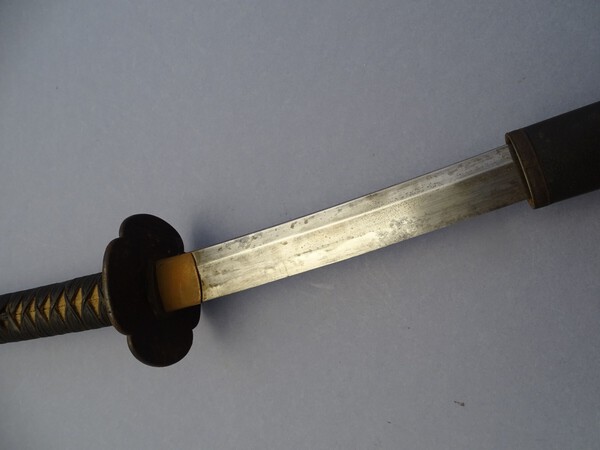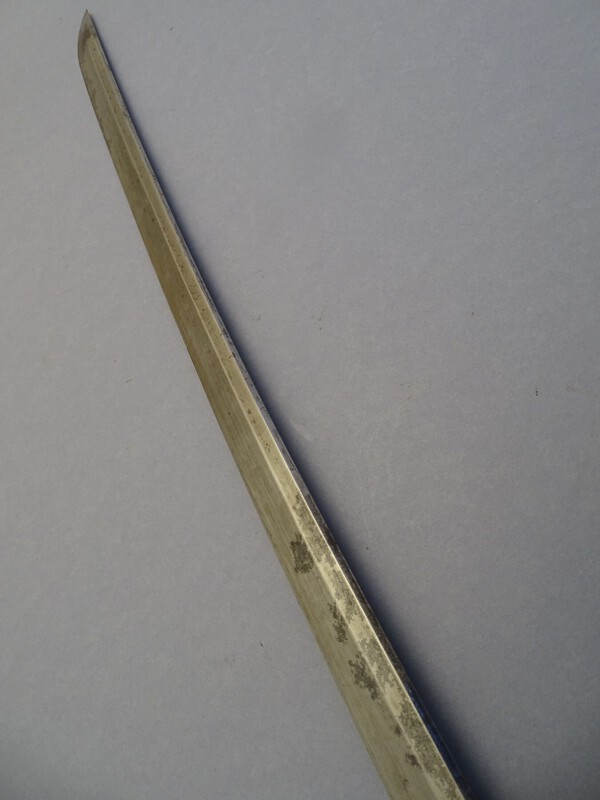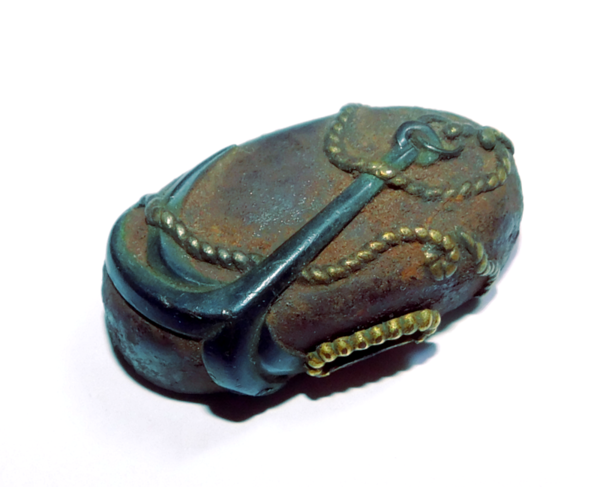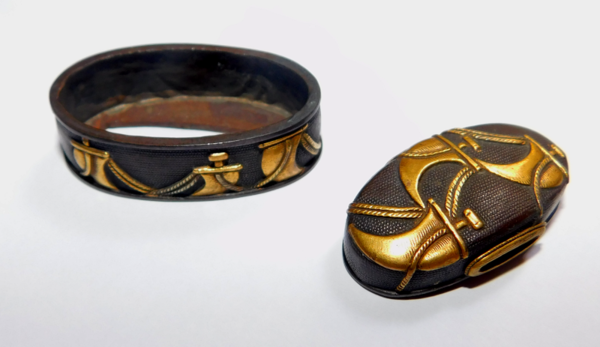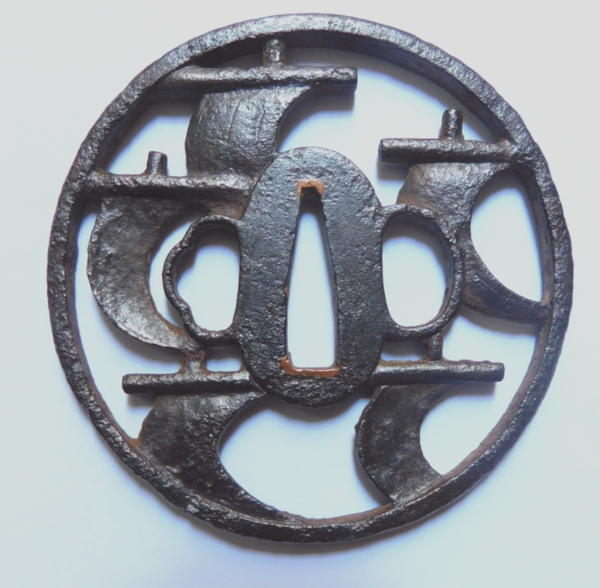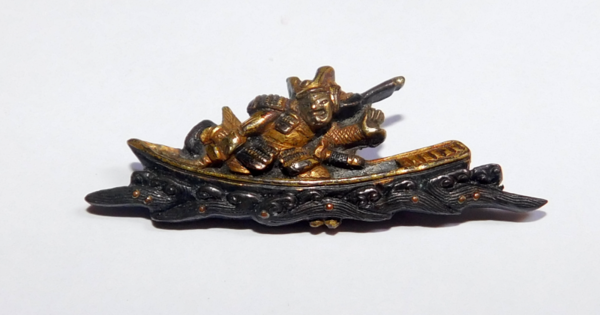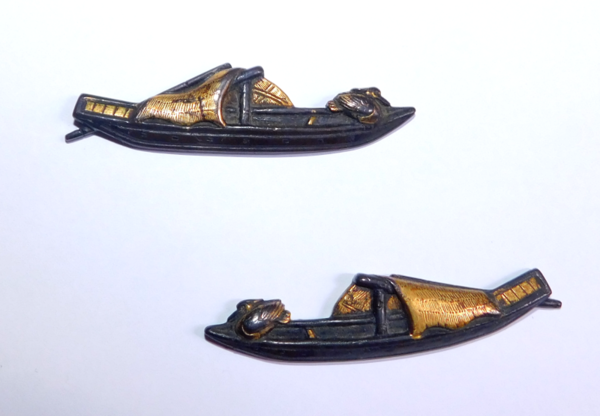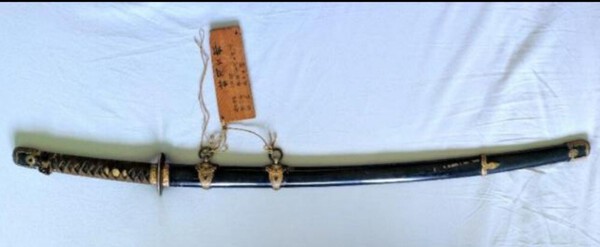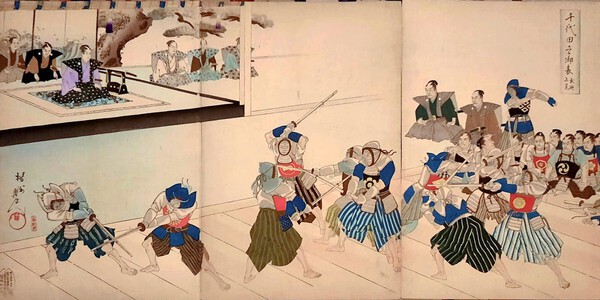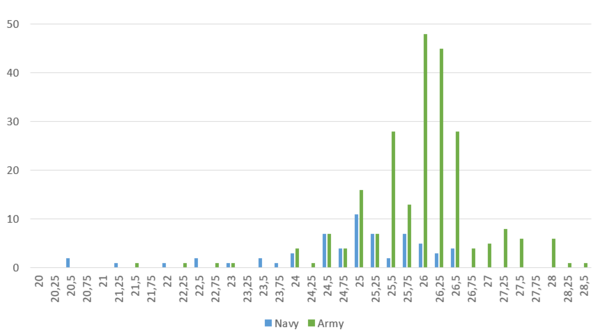-
Posts
81 -
Joined
-
Last visited
-
Days Won
1
Content Type
Profiles
Forums
Events
Store
Downloads
Gallery
Everything posted by Alban L
-
Good morning Thomas, Thanks again for identifying possible other characters in the lower part. I tried to imagine what this tsuba may have looked like with faces and hands inlays : That makes me wonder, would it be considered a total heresy to restore this kind of inlays ?
-
Hi all, this sword was finally sold 2500$, way too expensive compared to what I would give for a blade in this condition and without any idea of what's under the tsuka..!
-
-
Thanks Jean, didn't know about baleen or lacquered paper ! It is indeed very similar to what was discussed here :
-
Thanks again Steve ! Even thinking about ranks I don't think I would have found this one !
-
And here is another photograph of a navy officer, this time with a Kai Gunto, dated 1944. Really tricky one with hand-written kanjis, I am only able to read the date, and I am not even sure it is month (november) or just 11th day of the year (ie january).
-
-
Good morning, Thank you very much ! That helped me find more about this officer, who entered naval academy at Etajima and was promoted Ensign on 22 april 1890, was engineer on 2nd class cruiser Yoshino in 1895, then assigned in 1896 to the old ironclad Kongo, used as training ship at that time. He was commanding one of the trainees squad. Still instructor in a navy school 1899, assigned on Naniwa protected cruiser as chief engineer at the time of this photograph, during a port visit in Kiel. This ship took part in Russo-Japanese war in 1905, Chemulpo Bay, Ulsan and Tsushima battles. This officer may have participated in these battles as he is only reported assigned on Asama armored cruiser in 1907. Last, assigned chief engineer of Asahi battleship in 1909, then chief engineer of Sasebo reserve fleet, died in october 1942 at this function. Interesting and long-lasting career ! Here is another imperial navy officer photograph, Harada Tsunetaro, a bit later on 1917. This time with a traditional mount on his 1883 Kyu Gunto. This photograph was taken precisely at the same date 5th of July ! I didn't find for now any reason for this specific date, perhaps only a coincidence. However, not sure of the Kanji Tsune (常) on this second photograph. I checked navy lists and it appeared the only possible matching names are Harada Shutaro (原田集太郎) who died in 1904 so it can't be him in 1917, and Harada Masataro (原田松太郎) graduating in 1893. Could be this one but kanji is not corresponding and he would be too young on this photograph for 1917 as he is only Lieutenant here (not coherent after 24 years service) and no indication of contribution to russo-Japanese war, what would be quite surprising (medals are rising sun order 5th or 6th class, 1914-1915 medal and Taisho coronation medal), so the officer depicted on this photograph may be younger, entering imperial Navy after russo-Japanese war.
-
Good evening all, I would appreciate any help to complete translation of Kanji on this photograph of a Meiji era navy officer wearing a 1883 naval parade sword. Regarding the date on first line, I understood third kanji could be a vertical variant of 三 so we shoud have 明治三六年七月五日 ? Meiji 36 (1903 ?) 5th of July. Center line 帝国軍艦浪速機関長?田?? designate function of this officer who was chief engineer on protected cruiser Ninawa, but this line is incomplete. I guess we could have his name on last column on the right but I am not able to translate it...
-
Thanks for advice, that's what I think too. It may not be expensive at all, as I am interested by tsuba and as other mounts may be interesting too I could give a chance to this sword, no matter what is hiding under there if it stays not so expensive.
-
Thanks, if that's what you saw I think it is only a mark without link with the small nick on the edge. Also finger prints, poor preservation by previous owner...
-
Good morning, Here are some photos of a sword in tachi mounts from an upcoming sell. Any idea on the interest of this sword ? Cannot see much of the blade, I have asked for more especially on the kissaki and nakago but not sure I will receive it before the sell. It looks to be in poor conditions. Blade is said to be 29" long, total 41" for the sword. Tsuba looks lovely with masts in front of Mont Fuji, but I am more surprised by what looks like to be a sort of leather strap on tsuka. Is is possible on an old sword ?
-
Thanks Brian, I will contact Ford. I wouldn't have tried anything by myself anyway, I don't have any competence for it and I always apreciate seeing the work of the real specialists ! Beautiful box Malcolm, what was it made for exactly ?
-
Sure, but I don't know much about kashira restorarion, I may have to find someone who could do it.
-
This is a beautiful one Piers ! I saw this pattern several times, would be nice to find one someday
-
You're right, I didn't see it at first but it looks like there could be even 2 people in the other boat, missing inlays for hands and figures like the main character
-
Thanks Dale, the first anchor tsuba is impressive !
-
Good morning, Here is an update with new maritime items. First an anchor Kashira, a bit rusty buy lovely object : Another Fushi-Kashira set with sails pattern, I really like this one : To complete this set, I recently got this tsuba with a similar pattern from Grey Doffin whom I thank again. And last, a single menuki with a Samurai in a small boat (I am searching another menuki to complete this one, I may just have found it), and a pair of menuki with cormorant fishing boats :
-
Good morning, Here is for sale in France a late war (1944) Kai Gunto from Yoshishige (良重) : https://www.naturabuy.fr/KAi-Gunto-signe-YOSHISHIGE-item-9339101.html Same swordsmith we discuted here from a sword I just bought : No Seki stamps on this sword, should be a good quality Showato but still probably a non traditionnal blade. Seems to be in good condition, seller is asking 1600€ (same in dollars) for auction. May be paid in 4x as possible on this website. Let me know if anyone interested, I may ask for more information or photos. With what is said to be an original bill for this sword, or it is a bring-back paper from its original owner ?
-
Hi all, Here is a nice original 1897 Ukiyo-e by famous artist Toyohara Chikanobu, one of "Chiyoda outer palace" series (Edo castle), representing differentscenes at the time of the shogunate. This one represents warriors practicing Kenjutsu in front of the Shogun. Very impressive depiction !
-
- 5
-

-
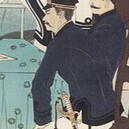
Some help needed on a Kai-Gunto Wakizashi.
Alban L replied to tbonesullivan's topic in Translation Assistance
Good morning, Very nice sword. I have often seen wakizashi or relatively short katana blades on navy mounts. To compare to army swords, I did a little survey on the lengths observed on more than 300 army and navy blades. Either ancestral blades or war productions, Kai Gunto most often have blades around 24/25'', often shorter, whereas army swords lenghts are more distributed, usually longer, around 26'' and up to 28'' (with all 26.25/26.50'' industrial blades for NCO swords). (Number of swords / blade length) Interesting finding. Trying to explain this notable difference, as sailors were certainly not to be smaller than their army counterparts, it was undoubtedly rather to facilitate movement onboard ships, and naval swords had certainly less chance of being used in combat. Was there any regulation precising and explaining blade lenghts for both Army and Navy ? -
Thank you, would you know what is considered to be the date marking the begining of Showa era in 1925 ? I thought that was the death of emperor Taisho and begining of emperor Showa reign end of 1926.
-
Good morning, I'd also have a question regarding the dates on swords, do we consider the years to be precisely equivalent to our calendar ? I mean, Showa era is supposed to begin on 25 december 1926, at the very end of the year 1926. So 1st year of Showa era could be considered to be december 1926 to december 1927. And incidently, 18th year would be december 1943 to december 1944. That is to say more likely 1944 ? Or do we consider as a strict equivalent of our calendar that 1926 is the first Showa year (for only one week), and begining of january 1927 we are already in 2nd year of Showa era ? Sorry for this naive question, just trying to understand the logic that was followed !
-
Good evening Bruce, I saw your Kaigunto when looking on this forum about Yoshishige. Very similar sword ! The need for stamps indicating a good quality Showato would completely make sense, especially when swordsmiths are also known for other high quality productions. We had exactly the same need in Europe during XIXth century when evolving from artisanal swordsmiths production to large scale industrial production, having as a consequence some concerns about swords quality. For example during the 1880s the procurement scandal in UK, after a series of incidents with broken army and navy swords at combat. British had as a consequence the "prooved" stamps on their swords, and other quality labels appeared at the same time abroad like the "Eisenhauer" (cutting metal) mention on Solingen swords or equivalent "Yzerhouver" in the Netherlands. Purpose was to certify quality of industrial swords. We could have exactly the same logic in 1930s Japan, in need for a mass production but guaranteeing combat-ready swords. That's just hypotetic but that would make sense to consider these stamps indicate good quality showato. Still not Gendaito but intersting for those looking for military swords like we do.
-
Reading about these stamps I understood it was always indicating a non-traditional blade. I am quite sure it is indeed the case for stainless steel Kai Gunto blades with the anchor stamp, but I am still wondering it is always verified for other stamps like this Seki one or if it can just be like you suggest a military acceptance stamp, without consideration of traditionnally making or not. I have not seen any precise source on this subject. Considering this precise swordsmith, Yoshishige (良重), I made a quick search and it appears he made some high class swords like the one presented on this website, also made during the war but without stamp : https://www.samuraishokai.jp/sword/14123.html?fbclid=IwAR2oHUnkesHVpIcQ3xCbWiO62ONAvl5k4O8BTu98u57zCbUat5NpL4XiTWY Or this one said being made before the war : The sword I got has a clear hamon very similar to the blade from the same swordsmith presented here : Not sure is is even partially hand forged but I still like it, I have been waiting for my first Kai Gunto for a while now ! I will present it here when I receive it. Don't really know what to think about these stamps, I don't know enough about it. If people tend to say it is usually indicating non-traditionnal making, there may be some reasons. But it appears some swordsmiths also made higher grade swords. Regards, Alban

